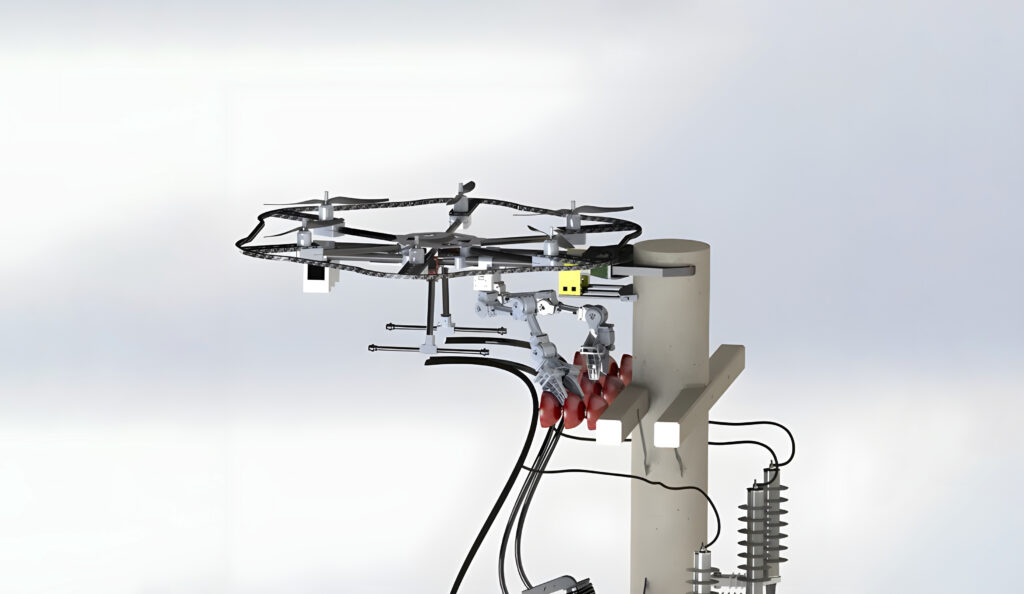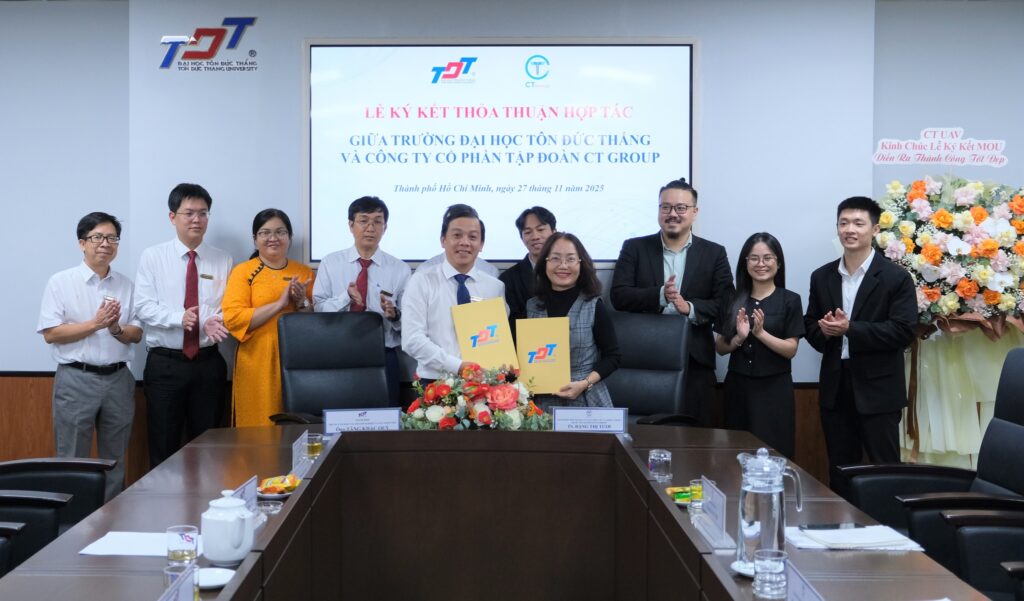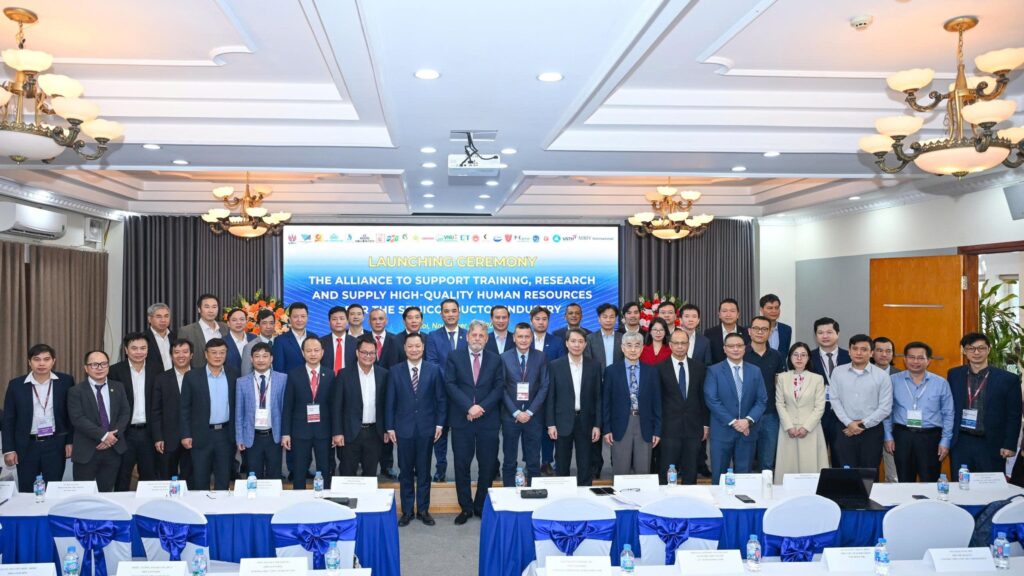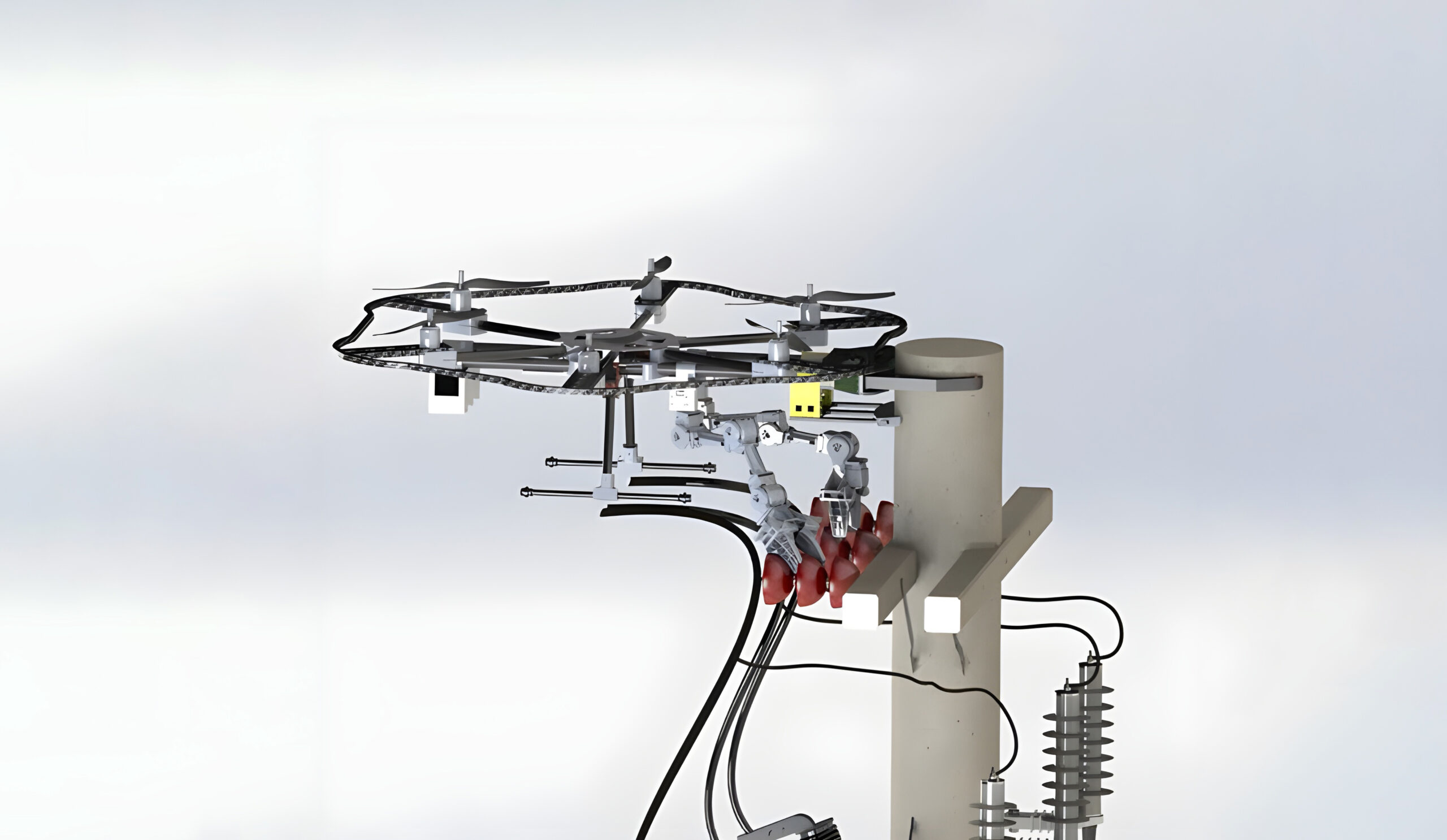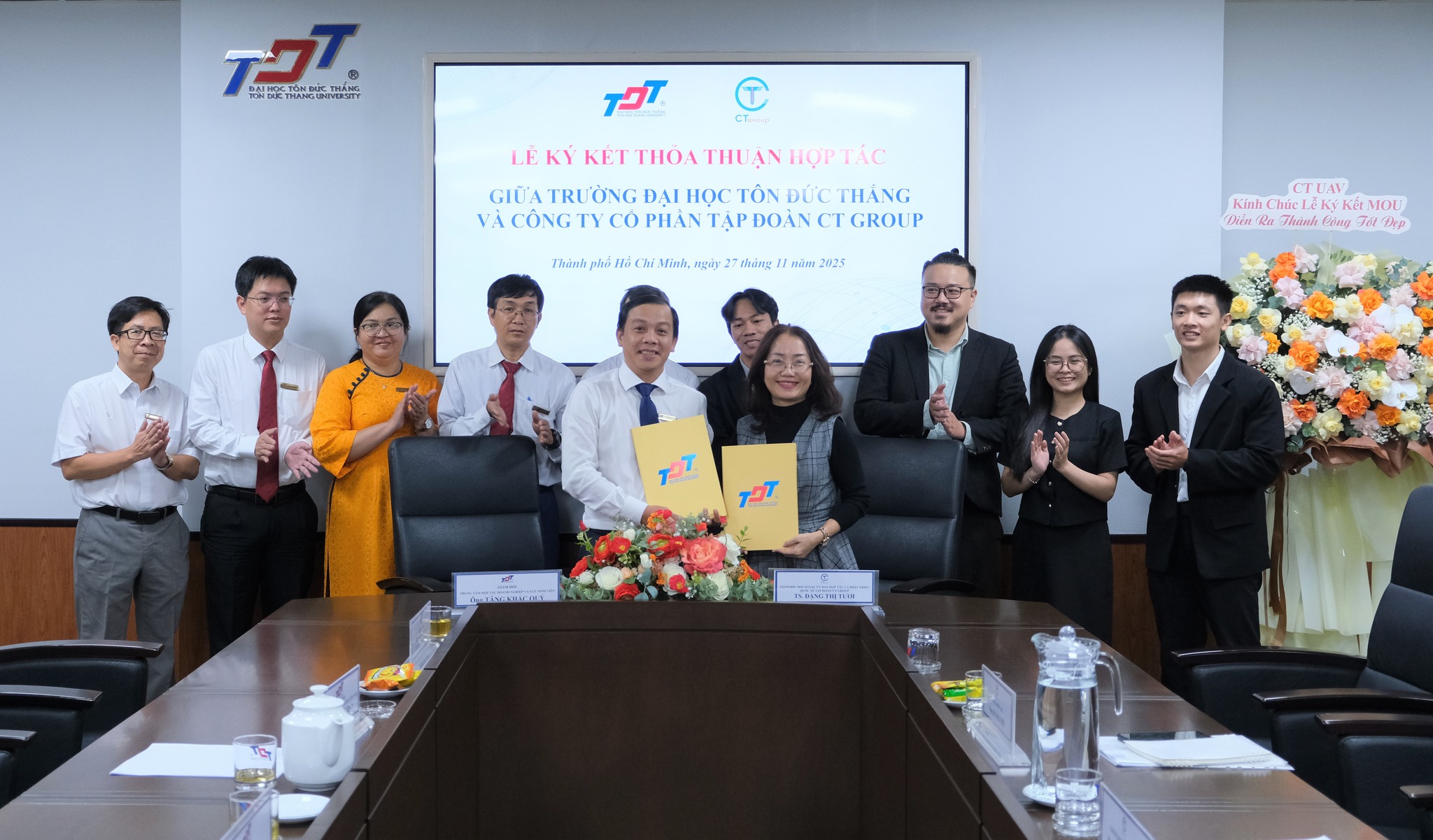The dancing humanoid robots and UAVs made in Vietnam and sent to South Korea show that Vietnam is moving toward mastering technology in many fields.
High-tech products “Made in Vietnam”
The first lineup of humanoid robots entirely developed, designed, and manufactured by a Vietnamese enterprise marks a significant breakthrough for domestic companies. Developed in just six months – a world record for the speed of deployment in robotics – this achievement is particularly remarkable given that humanoid robots represent a strategic and core technology in the new wave of scientific and technological revolution. The first humanoid robot system completely developed by a Vietnamese enterprise, from research and design to production, demonstrates the remarkable progress of domestic companies. With a development time of only 6 months, it holds the world record for the fastest deployment in robotics technology, especially for humanoid robots, which are a strategic and key technology in the new scientific and technological revolution. VinMotion Chairman Nguyen Trung Quan affirmed that the company completely controls the entire process, from mechanics and electronics to software, without importing complete vehicles or original frames from any manufacturer.
“Every single component was developed in Vietnam – 100% by the hands of Vietnamese engineers—and we are proud of that. This live demo performance marks a true technological milestone, giving us the confidence to soon deploy multiple robots simultaneously across various real-world applications,” Mr. Nguyen Trung Quan shared.
Not only does VinMotion have a humanoid robot team, but Vietnam also has many companies that can produce high-tech products. Recently, at the Vietnam-Korea Economic Forum event on August 12th, and under the witness of General Secretary To Lam and South Korean Prime Minister Kim Min Seok, Vietnam’s CT Group and a newly emerging UAV technology company in South Korea signed a memorandum of understanding to export 5,000 UAVs to South Korea. According to the group, cargo UAVs weighing from 60 kg to 300 kg, manufactured by CT UAV Company – a member of CT Group – with up to 85% domestic content and Vietnam’s proprietary technology, have been highly praised by many countries, including South Korea. Self-sufficiency in semiconductor chip design technology for UAVs gives CT UAV a unique competitive advantage.

100% humanoid robot ensemble VinMotion’s “Make in Vietnam” strongly impressed viewers.

With a 100% “Made in Vietnam” humanoid robot fleet, VinMotion has built a technological foundation for developing specialized robot applications in the future.
Another company, Viettel Post, is testing autonomous delivery robots in the Vinhomes Thăng Long urban area (Hanoi). The robot was designed by the company specifically for indoor use, with a maximum load capacity of 400 kg, a speed of 25 km/h, and equipped with 24 electronic lockers. This self-driving car is equipped with multiple cameras, radar, lidar, artificial intelligence (AI) voice control, and advanced control software. This is just one product manufactured by a unit of Viettel Group, while the parent company also has many other products such as radar, electro-optical equipment, electronic warfare, military communications, simulation training, command and control, UAVs, cyber warfare, cybersecurity, and other product groups…
As can be seen, high-tech “Make in Vietnam” products have made significant strides, and Vietnam is ready to participate in the technology game at a higher level.
The Transformation of Vietnamese Technology
TS Thai Kim Phung, Vice Principal of the School of Technology and Design, University of Economics Ho Chi Minh City, commented: VinMotion, CT Group, and Viettel Post’s high-tech products are not isolated successes, but clear evidence of a significant turning point in Vietnam’s technology industry. First of all, this shows that Vietnamese enterprises have moved beyond the assembly and processing stage to master complex core technologies. For example, in the case of VinMotion’s robot, building a humanoid robot capable of performing complex movements, maintaining balance, and basic interaction within 6 months is a remarkable achievement. This not only requires a high level of precision engineering but also mastery of control technology, sensor systems, computer vision, and AI. This shows that VinMotion has not only created a product, but has also built a technological platform for developing specialized robotic applications in the future.
For CT Group’s UAVs, the breakthrough here is the independent design of semiconductor chips and achieving an 85% localization rate. Chip design is a highly advanced stage of the electronics industry, requiring deep research and development (R&D) expertise and extremely high-quality human resources. Vietnam’s ability to export UAVs to a demanding market like South Korea is international recognition of the product’s quality and competitiveness. This proves that we can not only do it, but also do it well and meet international standards… TS Thai Kim Phung emphasized: “Looking at these examples, I assess that the level and self-reliance of a segment of Vietnam’s leading technology enterprises have made remarkable progress. We have demonstrated our ability to master complex, multi-sectoral technologies and create “Make in Vietnam” products that can compete fairly in the international market. These are extremely optimistic signals, showing that Vietnamese enterprises not only have the aspiration but have also proven their real capacity to reach global standards in the high-tech field.
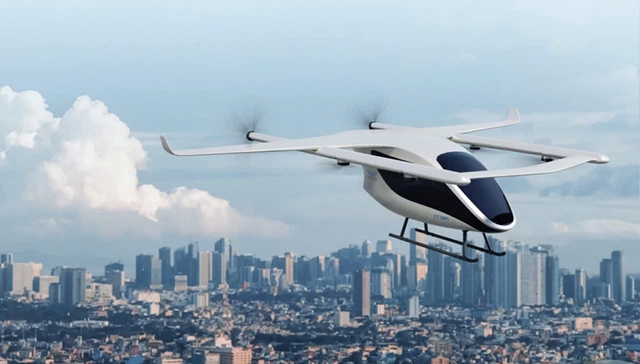
The UAVs manufactured by CT Group have a localization rate of up to 85%.
Assoc. Prof. Dr. Nguyen Thuong Lang(Institute of Trade and International Economics, National Economics University) also assessed that the modern and intelligent technology products that Vietnamese enterprises have showcased or offered to the world recently affirmed the significant improvement in Vietnam’s high-tech product design, manufacturing, and competitiveness. The export of UAV sales contracts can be considered a milestone in the history of Vietnamese technology because it has significant and crucial applications, ranging from science and civil life to national defense and security. We are completely confident that this is the initial manifestation of the Vietnamese technology wave, made by Vietnamese people. The issues we’ve been harboring and long desired are now the opportunity to come to light. It could also be said that this is the beginning for Vietnam to gradually make its mark on the world’s high-tech map.
In reality, Vietnam is a country with a relatively slow-developing technology sector. In the field of technology, which is core to the human era of digitalization, big data, and the digital age, we are moving quite quickly, possibly on par with many countries that are ahead of us. High-tech products like robots, UAVs, artificial intelligence, big data mining, and chips can help Vietnam upgrade very quickly. These products are made possible thanks to Vietnam’s strong foundation in human resources, mathematical proficiency, STEM skills, digital capabilities, and more. With a foundation of knowledge and a great aspiration, and in the context of the Politburo having Resolutions No. 57 on breakthroughs in the development of science, technology, innovation, and national digital transformation, we are confident that we will have even more high-tech products Made in Vietnam,” confidently stated Associate Professor Dr. Nguyen Thuong Lang.
Encouragement and promotion will lead to more groundbreaking products.
Although only an initial step, Mr. Vo Hoang Lien, Chairman of the Vietnam Internet Association, affirmed that this is a commendable effort. He emphasized that this move is necessary and will lay the foundation for the future development of science and technology. In the past, businesses were often hesitant to invest in innovation and faced many difficulties due to the lack of supportive policies, the market’s unpreparedness, and even skepticism or jealousy within the business community. However, there has been a significant shift in both awareness and vision, especially thanks to the encouraging policies of the Party and the State. Resolutions No. 57 and No. 68 of the Politburo – on the development of science and technology, and on the development of the private sector – have helped businesses become more confident and expand their operations.
“I have great confidence in the potential of domestic enterprises to create high-tech products that are on par with any company in the world. Vietnamese businesses are becoming more confident and able to identify opportunities, which will enable them to achieve remarkable things – especially now that the government is actively promoting and creating an open playing field. Exceptional results will follow. We must encourage and support even the earliest ideas and prototype products. A solid foundation is essential for breakthrough innovations. This moment in time is not only an opportunity for large enterprises but also for any individual or startup to grow and succeed. They, too, can develop high-tech ‘Make in Vietnam’ products,” Mr. Vo Hoang Lien said.
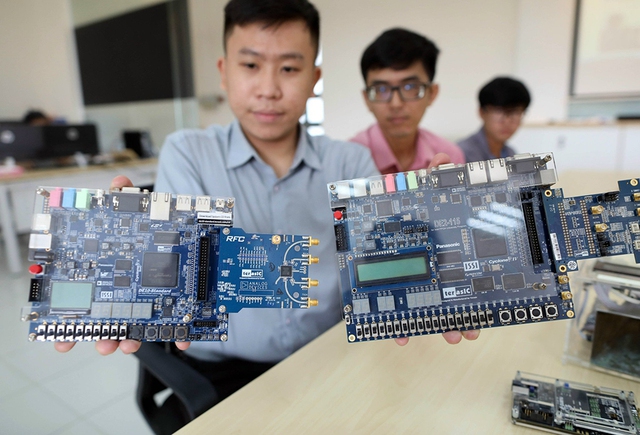
More and more high-tech products developed by Vietnamese engineers are expected to emerge. (In the photo: The Microchip and High-Frequency Systems Laboratory at Ho Chi Minh City University of Technology.)
Dr. Thai Kim Phung believes that in order to see more high-tech products truly made by Vietnamese, we need a “three-legged stool” model, where capital, technology, and human resources are all indispensable. Capital is often considered the “lifeblood” of all activities. However, it is only a necessary condition. In reality, if we have an excellent workforce and a breakthrough idea, attracting capital – from investors, – venture funds, or government policy – becomes much more feasible. At the same time, we can leapfrog by acquiring or transferring technology. But to truly “Make in Vietnam,” we must have the capacity to absorb, master, improve, and ultimately invent new technologies. “Who will do that? It is the people. Technology cannot develop on its own without the minds of engineers and scientists. Therefore, high-quality human resources are the starting point and the central driving force that creates both capital and technology. In addition to these three elements, to fully unlock human potential, we also need a fourth factor – a catalyst – namely, mechanisms and policies,” Dr. Thai Kim Phung emphasized.
Specifically, according to Dr. Phung, it is essential to create a favorable environment that includes tax incentive policies, technology incubators, state-backed venture capital funds, a “sandbox” mechanism for emerging technologies, and -most importantly – strict protection of intellectual property rights.
“I highly value the perspective and direction set forth in Resolution No. 57 of the Politburo on the development of science, technology, innovation, and digital transformation. This is not merely a guiding document – it identifies and begins to untangle long-standing bottlenecks within our science and technology ecosystem. I see tremendous opportunities for Vietnam to foster more high-tech enterprises in the near future. However, that only constitutes a necessary condition. The sufficient condition lies in the proactive efforts of the businesses themselves. No matter how good the policies are, without initiative from the enterprises, success is not possible. Businesses must take the lead in changing their mindset, daring to invest in R&D, building and attracting high-quality human resources, strengthening cooperation, developing ecosystems, and actively seeking and conquering markets. Capturing global markets will be the clearest proof of a company’s technological capabilities,” Dr. Thai Kim Phung added.
“If we don’t dare to play, we’ll always lag behind.”
Resolution No. 57 of the Politburo – and many others – has sparked innovation, encouraging self-reliance and resilience. We are witnessing unprecedented reforms that mark a revolutionary shift in mindset and action across the entire political system. This opens up enormous opportunities. However, when it comes to the development of science and technology, we must clearly recognize that the costs involved are far from simple. Risk is an inherent part of scientific and technological research. Therefore, if Vietnam hopes to establish its place on the global technology map, we must be willing to accept risks – sometimes very high ones. In return, success brings not only tremendous benefits but also major leaps forward in alignment with global technology trends. What some private enterprises have achieved in the high-tech field, such as Vingroup, FPT, and CMC,…serves as compelling evidence of boldness and a willingness to act. The issue is clear: if we don’t dare to take the leap, we’ll remain stuck in mediocrity. That’s why consistent and focused investment in science and technology is essential – not just in products and research projects, but also in people. Only then can we truly reap meaningful results.”
Dr. Vo Tri Thanh, Director, Institute for Brand and Competitiveness Strategy.
Effectively Leveraging the World’s Innovation Chain
Vietnam has the resources to accelerate digital transformation and harbors ambitions for high-tech development across multiple fields. However, the world is also rapidly racing in high technology, especially developed countries such as Japan, South Korea, Europe, and the United States. Therefore, besides accelerating investment in research and innovation development, Vietnam can purchase equipment and make full use of the global technology playground to upgrade its position. Simply leveraging their innovation chains well to create value-added products is already very beneficial. If the high-tech sector is properly invested in and directed, Vietnam will surely have more and better, more advanced high-tech products in the near future.
Assoc. Prof. Dr. Nguyen Thuong Lang.



